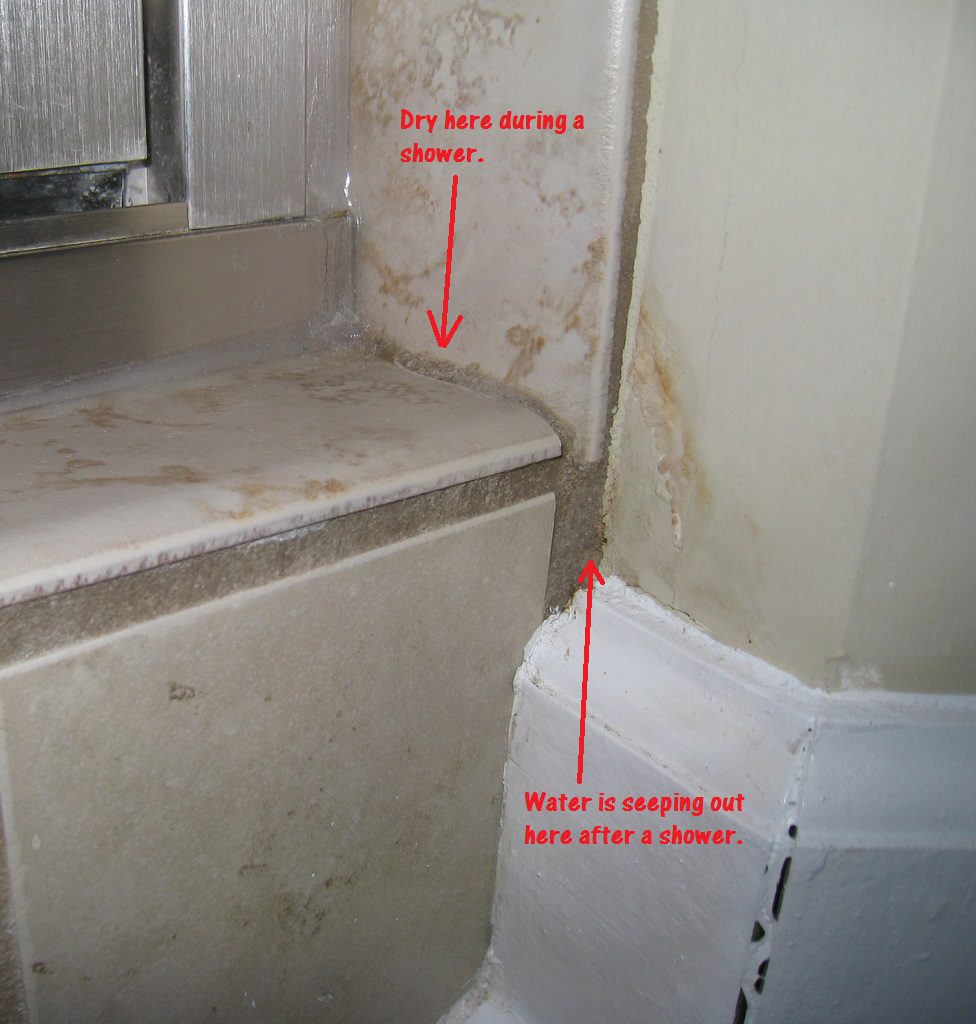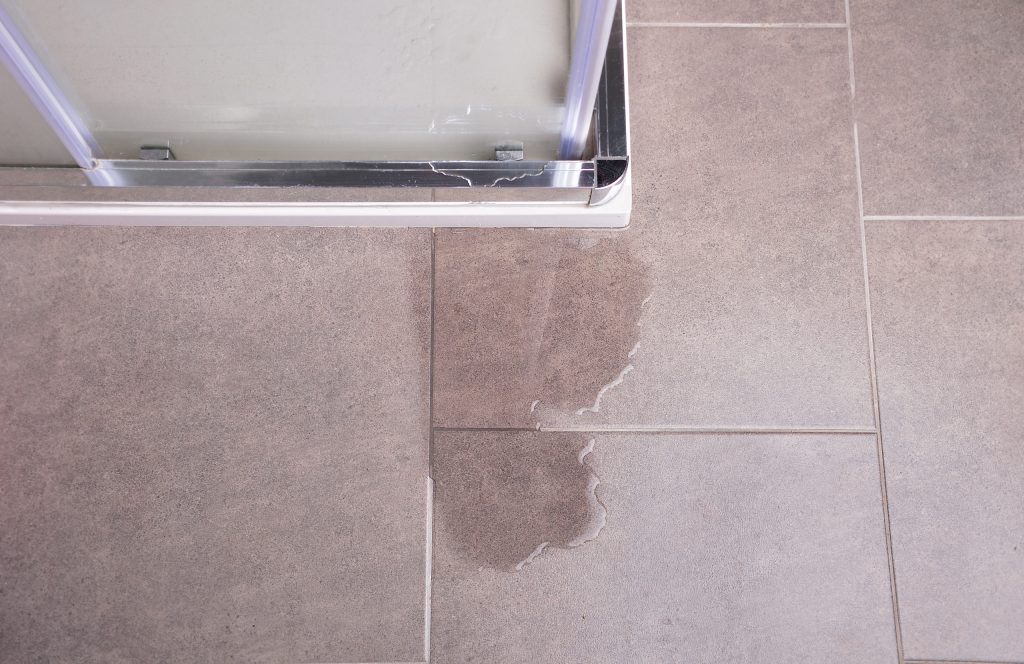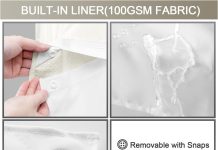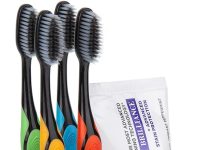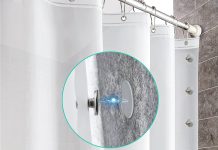Have you ever noticed water seeping out of the corner of your walk-in shower and wondered why? This common issue can be both frustrating and concerning, but fear not!
In this article, we will explore the possible reasons behind the water leakage from the corner of your walk-in shower.
Understanding the underlying causes, you will be better equipped to address and resolve this problem, ensuring a dry and enjoyable shower experience.
So, let’s dive into the possible explanations for why your walk-in shower leaks water from the corner.
Table of Contents
Causes of Water Leakage in Walk-In Showers
Improper Installation of Shower Pan
One of the most common causes of water leakage in walk-in showers is the improper installation of the shower pan.
The shower pan is responsible for collecting and directing water towards the drain. If not installed correctly, water may seep through gaps and cracks, resulting in leakage.
Cracked or Damaged Tiles
Another common cause of water leakage in walk-in showers is cracked or damaged tiles. When tiles are cracked or damaged, water can easily penetrate the gaps and reach the underlying layers, causing leakage. It is essential to regularly inspect the tiles and address any cracks or damages promptly to prevent water leakage issues.
Faulty or Insufficient Caulking
It was caulking seals the gaps and joints in the shower, preventing water from seeping through. If the caulking is faulty or insufficient, it may deteriorate over time or develop gaps, leading to water leakage. Regularly inspecting and maintaining the caulking is crucial to prevent water leakage in walk-in showers.
Leaking Shower Door
A leaking shower door can also be a significant cause of water leakage in walk-in showers. If the door is not properly sealed or the seals are damaged, water can escape through the gaps and cause leakage. Inspecting the shower door and ensuring it is adequately sealed is essential to prevent water leakage.
Drainage Issues
Problems with the drainage system can result in water leakage in walk-in showers. If the drain is clogged or there is a blockage in the plumbing, water may overflow and leak onto the floor. Regular maintenance and ensuring proper drainage in the shower are necessary to avoid water leakage issues.
Worn Out Grout
Grout is used to fill the gaps between tiles and provide waterproofing. Over time, grout can wear out or crack, allowing water to seep through and cause leakage. Regularly checking and regrouting the tiles is essential to maintain the integrity of the shower and prevent water leakage.
Water Pressure Problems
High pressure can cause water to spray outside the shower area, leading to leakage. On the other hand, low water pressure can result in water pooling in certain areas, increasing the chances of leakage. Regularly monitoring and adjusting the water pressure can help prevent water leakage in walk-in showers.
Poorly Sloped Shower Floor
The slope of the shower floor plays a crucial role in directing water toward the drain. If the floor is poorly sloped or uneven, water may accumulate in certain areas, increasing the risk of leakage. Correcting the slope of the shower floor can help prevent water leakage issues.
Structural Issues
Structural issues in the shower area, such as cracks in the walls or flooring, can allow water to seep into the underlying layers and cause leakage. Regularly inspecting the shower’s structural integrity and promptly addressing any issues can prevent water leakage.
Faulty Plumbing
Faulty plumbing connections can result in water leakage in walk-in showers. Issues such as loose pipe connections or damaged pipes can cause water to escape and lead to leakage.
Regular plumbing maintenance and repair of faulty connections are essential to prevent water leakage.
Diagnosing the Water Leakage
Inspecting the Shower Pan
When diagnosing water leakage in walk-in showers, the first step is to inspect the shower pan. Look for any signs of gaps, cracks, or improper installation. Examine the pan thoroughly to determine if it is a potential cause of the leakage.
Examining the Tiles and Grout
Carefully examine the tiles and grout for any cracks, damages, or signs of deterioration. Inspect the entire surface of the shower to identify any areas where water could penetrate. Address any issues found to prevent further water leakage.
Checking the Caulking
Inspect the caulking around the shower’s edges, corners, and joints. Look for gaps, deterioration, or areas where the caulking has come loose. Reapply caulking in affected areas to ensure proper sealing and prevent water leakage.
Analyzing the Shower Door
If your walk-in shower has a door, thoroughly examine it for gaps, damages, or faulty seals. Close the door and check for any signs of water leakage or seepage. Adjust or replace the door seals if necessary to prevent water from escaping.
Examining the Drainage System
Check the drainage system for any blockages, clogs, or malfunctions. Ensure that the drain is clear and functioning correctly. If there are signs of water pooling or slow drainage, address the issue promptly to prevent water leakage.
Testing Water Pressure
Monitor the water pressure in the shower. If the pressure is too high, consider installing a pressure regulator to prevent excessive water spraying and potential leakage. For low water pressure, check for any blockages or restrictions that need to be cleared.
Inspecting the Shower Floor Slope
Evaluate the slope of the shower floor. If it is uneven or poorly sloped, water may accumulate in certain areas, leading to leakage. Consider making adjustments or renovations to ensure proper water flow towards the drain.
Assessing Structural Integrity
Inspect the shower’s walls, flooring, and other structural components for any cracks, damages, or signs of weakness. Address any structural issues promptly to prevent further water leakage and ensure the long-term integrity of the shower.
Evaluating Plumbing Connections
Examine the plumbing connections within the shower area. Look for any loose or damaged connections that may result in water leakage. Repair or replace any faulty plumbing components to prevent water leakage issues.
Repairing the Water Leakage Issue
Reinstalling the Shower Pan
If the shower pan is determined to cause water leakage, it may need to be reinstalled correctly. This process involves removing the existing pan, addressing any underlying issues, and reinstalling a new pan with proper waterproofing and sealing.
Replacing Cracked or Damaged Tiles
If cracked or damaged tiles are causing water leakage, they should be replaced. Remove the affected tiles, address any underlying issues, and install new tiles with proper waterproofing techniques.
Reapplying Caulk
To address faulty or insufficient caulking, reapply caulk in the affected areas. Remove the old caulk, clean the surfaces thoroughly, and apply a new layer of high-quality caulk to ensure proper sealing and prevent water leakage.
Adjusting or Replacing the Shower Door
If the shower door is causing water leakage, it may need to be adjusted or replaced. This could involve installing new seals, realigning the door, or replacing the entire door system to ensure proper sealing and prevent water from escaping.
Fixing Drainage Problems
Address drainage issues by clearing blockages, fixing clogs, or repairing faulty components. Ensure the drainage system is properly functioning to prevent water from pooling or overflowing.
Regrouting the Tiles
If the grout is worn out or damaged, it should be replaced. Remove the old grout, clean the gaps thoroughly, and apply new grout to ensure proper sealing and prevent water from seeping.
Addressing Water Pressure Concerns
For water pressure problems, install a pressure regulator if the pressure is too high. This will prevent excessive water spraying and potential leakage. For low water pressure, check for any underlying issues and make necessary repairs or adjustments.
Correcting the Shower Floor Slope
To address a poorly sloped shower floor, consider renovating to ensure proper water flow towards the drain. This may involve adjusting the floor gradient, installing additional drainage channels, or using specialty products to improve the slope.
Repairing Structural Damage
If there are any structural issues causing water leakage, such as cracks or damages to the walls or flooring, they should be repaired promptly. Consult a professional to assess the extent of the damage and perform necessary repairs to prevent further leakage.
Fixing Plumbing Issues
Address any faulty plumbing connections within the shower area. Replace or repair loose or damaged pipes, fittings, or connections to ensure a watertight seal and prevent water from escaping.
Preventing Water Leakage in Walk-In Showers
Hire a Professional Installer
It is recommended to hire a professional installer for walk-in showers to prevent water leakage issues. A professional will ensure proper installation, use appropriate techniques and materials, and minimize the risk of leakage.
Regularly Inspect the Tiles and Grout
Regularly inspect the tiles and grout in your walk-in shower to identify any cracks, damages, or signs of wear. Promptly address any issues by replacing tiles or regrouting to maintain the integrity of the shower and prevent water leakage.
Maintain and Replace Caulking
Regularly maintain the caulking around the shower’s edges, corners, and joints. Periodically check for gaps, deterioration, or loose areas, and reapply fresh caulk as needed. Replace the caulk if it is no longer providing a proper seal.
Keep Shower Door Seals in Good Condition
Ensure that the seals on your shower door are in good condition. Regularly clean and inspect them for any damages or wear. Replace the seals promptly to maintain proper sealing and prevent water leakage.
Ensure Proper Drainage
Maintain proper drainage by regularly cleaning the drain and addressing any blockages or clogs. Ensure that the plumbing system is designed to handle water flow from the shower, preventing any overflow and subsequent leakage.
Monitor Water Pressure
Regularly monitor the water pressure in your walk-in shower. Consider installing a pressure regulator if the pressure is too high, and check for any underlying issues if the pressure is consistently low. Maintaining optimal water pressure prevents water from escaping and causing leakage.
Maintain the Shower Floor Slope
Regularly check the slope of your shower floor and make any necessary adjustments to ensure proper water flow towards the drain. Avoid allowing water to accumulate in certain areas, increasing the risk of leakage.
Regularly Check for Structural Issues
Inspect the walls and flooring of your walk-in shower for any signs of cracks, damage, or weakening. Regularly check the structural integrity to catch any issues early and prevent water leakage.
Schedule Routine Plumbing Maintenance
Schedule routine plumbing maintenance for your walk-in shower. Regular inspections and maintenance by a professional can help identify and address any potential issues before they lead to water leakage.
Consider Waterproofing Measures
To enhance the waterproofing of your walk-in shower, consider applying additional measures such as waterproofing membranes or coatings.
These products create an extra layer of protection and help prevent water from seeping through and causing leakage.



